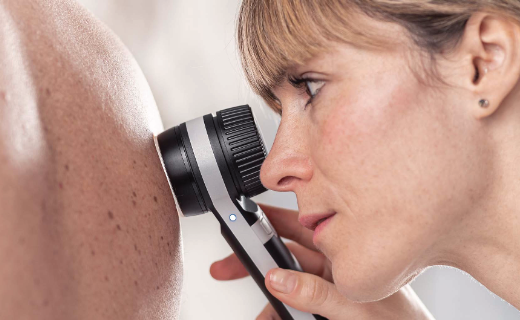
Corneobiology and corneotherapy
Corneobiology refers to experimental studies that are focused on the anatomy and biolology of the stratum corneum, the most superficial layer of the skin…

Milia are cysts of keratin about 1-3 mm in diameter which occur due to the obstruction of a sweat duct or hair follicle. They can be classified into primary milia, which develop spontaneously with no clear etiology, and secondary milia, which appear after traumatic events on the skin, for example.
This condition usually manifests in middle-aged women in regions of the head and neck and around the eyes or nose (1). Predisposing factors include heavy moisturizers, poor face hygiene (sleeping with makeup on, for example), the use of topical corticosteroids, and sun damage.
The first few weeks after birth present major changes for a baby. During pregnancy, it was supplied with important nutrients via the mother’s bloodstream. Along with these nutrients, maternal hormones can enter the baby’s blood.
Immediately after birth, when the child is “disconnected” from the mother’s bloodstream, these hormones suddenly drop. In response to the hormonal change, various skin changes can occur including milia, newborn acne, and seborrheic dermatitis, among others.
All of these skin conditions occur around the 3rd week of life and disappear again as soon as the baby’s organism has regained balanced of its hormonal status (2).
The answes is yes – milia can disappear on their own. In infants, this means that the best treatment is no treatment. Squeezing is generally contraindicated, as it irritates the skin and may lead to hyperpigmentation due to the associated inflammation.
Nevertheless, in adults with persistent milia that remain longer than expected without receding, it is possible to visit a facialist or dermatologist who can scratche the milia with a fine needle and gently evacuate the cyst content (3).
In the case of large milia, an experienced dermatologist can remove them with a 2-3mm punch under local anesthesia.
The key is using gentle products on the skin that do not cause inflammation. This is why irritant cosmetic products should be avoided. Moreover, soft exfoliation can be performed. The goal of this treatment lays in the removal of skin impurities, which result in skin that is toned, cleaner, and visibly refreshed
At home, a mild mechanical peeling can be performed regularly at a rate of once or twice a week. When choosing a scrubbing cream for personal use, it is important to look for a cosmetic formulation that uses organic exfoliation particles and contains moisturizing ingredients in order to prevent unnecessary skin irritation.

Corneobiology and corneotherapy
Corneobiology refers to experimental studies that are focused on the anatomy and biolology of the stratum corneum, the most superficial layer of the skin…

Nowadays, almost everyone uses a hydrating cream daily. But which daily routine is the best one?

Dermatoscopy of nevus cell nevi
With the aid of a dermatoscope, a so-called reflected-light microscope, skin lesions can be magnified and viewed…

We will call you back soon